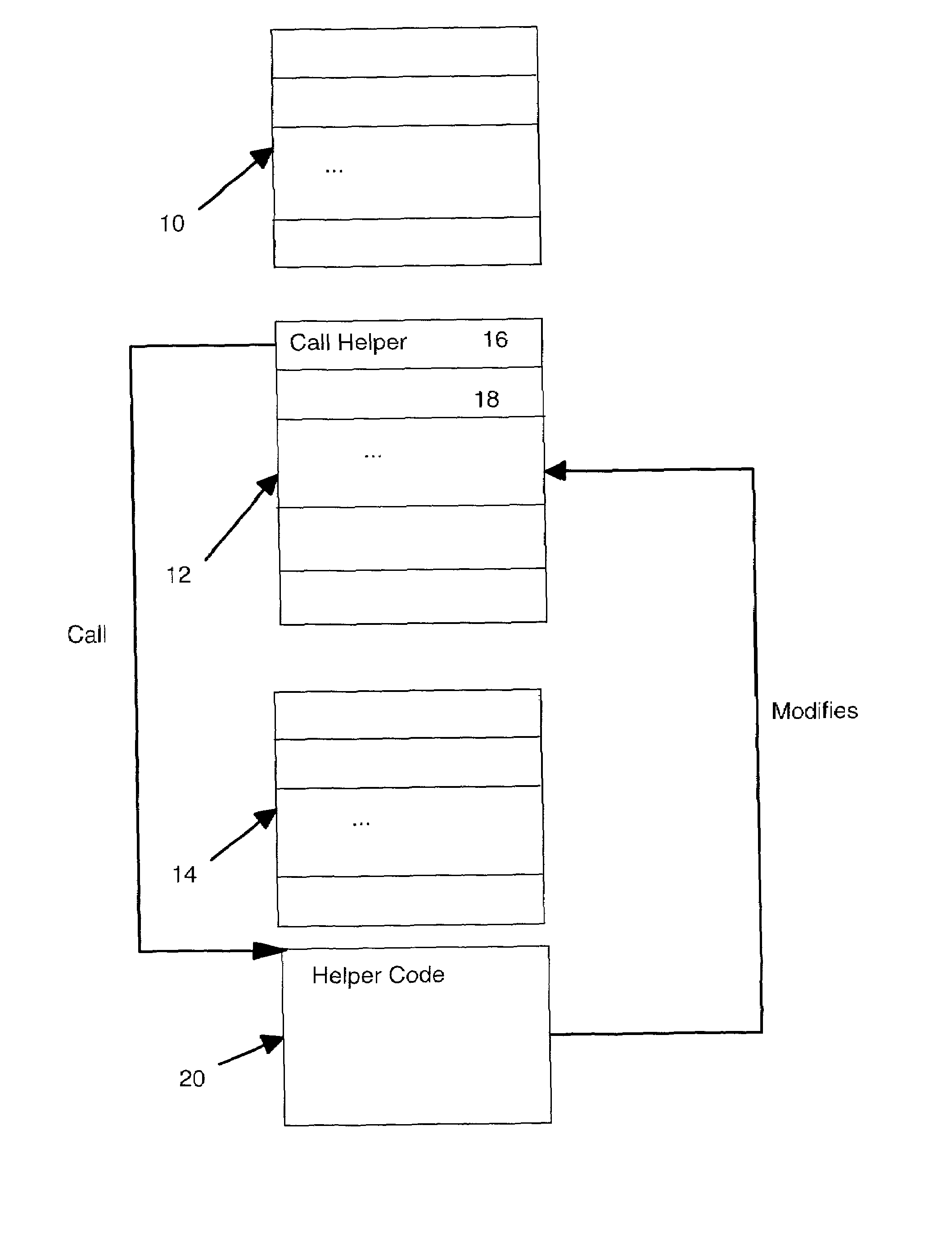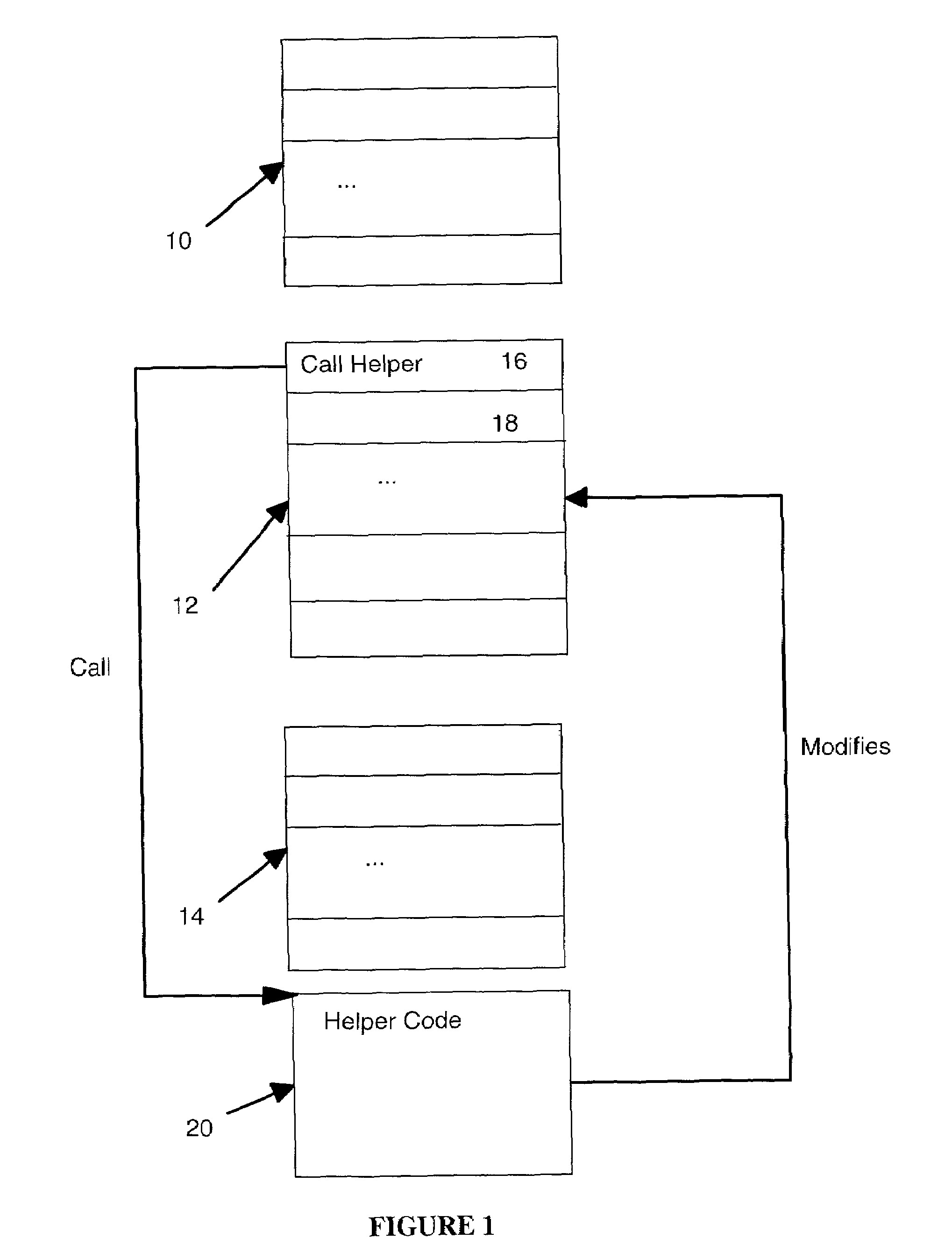Efficient locking for thread-safe self-modifying code
a self-modification and code technology, applied in the field of computing systems, can solve the problems of significant overhead, self-modification may create errors, and the approach has a cost in the code space required to implement the specific locks for each code si
- Summary
- Abstract
- Description
- Claims
- Application Information
AI Technical Summary
Benefits of technology
Problems solved by technology
Method used
Image
Examples
Embodiment Construction
[0040]FIG. 1 shows a block diagram illustrating an example code sequence in which block 10 represents a sequence of instructions leading up to the sequence to be modified, block 12 represents the sequence of instructions to be modified, and block 14 represents instructions following the sequence to be modified. Instruction 16 within block 10 is shown in FIG. 1 to have the call to the routine which modifies block 12 instructions at runtime. Instruction 18 in FIG. 1 is the instruction following the call instruction of instruction 16. In the preferred embodiment illustrated in FIG. 1, the code to modify block 12 instruction is a reference resolving routine shown as helper code 20.
[0041]The locking mechanism of the preferred embodiment uses a compare and exchange instruction. An example of such an instruction is the cmpxchg instruction found in the instruction set for Intel Architecture x86 processors (Intel 80486-compatible processors; the instruction set is sometimes referred to as th...
PUM
 Login to View More
Login to View More Abstract
Description
Claims
Application Information
 Login to View More
Login to View More - R&D
- Intellectual Property
- Life Sciences
- Materials
- Tech Scout
- Unparalleled Data Quality
- Higher Quality Content
- 60% Fewer Hallucinations
Browse by: Latest US Patents, China's latest patents, Technical Efficacy Thesaurus, Application Domain, Technology Topic, Popular Technical Reports.
© 2025 PatSnap. All rights reserved.Legal|Privacy policy|Modern Slavery Act Transparency Statement|Sitemap|About US| Contact US: help@patsnap.com


